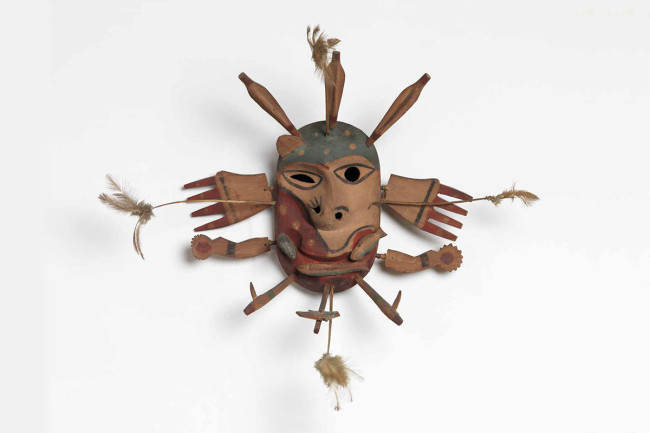
The Surrealists’ Dance with Yup’ik Masks
The New York Review of Books
Gini Alhadeff of the New York Review of Books discusses the exhibition Moon Dancers: Yup’ik Masks and the Surrealists, organised by Di Donna Galleries in collaboration with Donald Ellis Gallery. The exhibition showcases ceremonial dance masks from the Yup’ik, an Indigenous people of the Arctic, alongside Surrealist paintings and sculpture by Yves Tanguy, André Masson, Joan Miró, Enrico Donati, Victor Brauner and Wolfgang Paalen. ‘The connection between the Surrealists’ works and the Indigenous Yup’ik artefacts is never direct,’ the author writes. ‘They seem, rather, to have drifted together naturally.’
Collecting Native American art was central to Surrealist thought and practice. According to scholar Marie Mauzé, the Yup’ik world was a ‘means of combating feelings of isolation.’ For many Surrealists who were seeking exile in North America following the horrors of the Second World War, Indigenous art offered a form of spiritual release from the modern world. Donald Ellis notes that the exhibition is ‘not so much about the way that the artists looked at the masks, but about the way the masks looked at the paintings.’ André Breton believed in the superiority of animals and spirits, and in the power of objects over humans.
As Alhadeff writes, ‘Freud had opened the way to thinking about the irrational. But just as Picasso’s “primitivism” wasn’t merely esthetic— primitivist objects seemed to contain a kind of power that was renewing all of Western representation—so, too, the Surrealists, like the Renaissance art historian Aby Warburg in his personal immersion in the Serpent rituals of the South-Western Pueblos, were keenly interested in a contact with a spirituality that did not shy away from the mysteries of physical life—through dreams, rituals, trances, magical and religious thinking—or from the paranormal intuitions of schizophrenics.’



